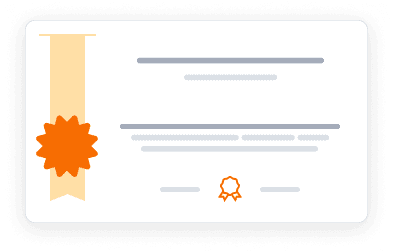This course is part of Computational Social Science.
This course cannot be purchased separately - to access the complete learning experience, graded assignments, and earn certificates, you'll need to enroll in the full Computational Social Science Specialization program. You can audit this specific course for free to explore the content, which includes access to course materials and lectures. This allows you to learn at your own pace without any financial commitment.
4.7
(228 ratings)
15,810 already enrolled
Instructors:
English
پښتو, বাংলা, اردو, 3 more
What you'll learn
Define and analyze network structures and relationships
Visualize and interpret social network data
Understand network evolution and growth mechanisms
Apply network analysis to real-world case studies
Skills you'll gain
This course includes:
5.3 Hours PreRecorded video
5 quizzes
Access on Mobile, Tablet, Desktop
FullTime access
Shareable certificate
Get a Completion Certificate
Share your certificate with prospective employers and your professional network on LinkedIn.
Created by
Provided by

Top companies offer this course to their employees
Top companies provide this course to enhance their employees' skills, ensuring they excel in handling complex projects and drive organizational success.





There are 5 modules in this course
This comprehensive course introduces the science of social networks through computational methods. Students learn to formalize, analyze, and visualize network structures using modern tools. The curriculum covers network fundamentals, metrics, centrality measures, and community detection. Through hands-on labs and case studies, learners explore network evolution, efficiency, and prediction methods while developing practical skills in network analysis software.
Getting Started and Formalizing Networks
Module 1 · 2 Hours to complete
Social Network Analysis
Module 2 · 1 Hours to complete
Analyzing a Network with Software
Module 3 · 3 Hours to complete
Network Evolution
Module 4 · 1 Hours to complete
Growing Networks and Making Predictions
Module 5 · 1 Hours to complete
Fee Structure
Individual course purchase is not available - to enroll in this course with a certificate, you need to purchase the complete Professional Certificate Course. For enrollment and detailed fee structure, visit the following: Computational Social Science
Instructor
Leading Expert in Computational Social Science at UC Davis
Professor Martin Hilbert is a distinguished academic at the University of California, Davis, where he serves as the Chair of the Department of Computational Social Science. His research focuses on the impact of digital information and algorithms within complex social systems. Dr. Hilbert holds dual doctorates in Economics and Social Sciences (2006) and in Communication (2012), and he is affiliated with both the Communication and Computer Science departments at UC Davis. He is widely recognized for his groundbreaking study that quantified the amount of information in the world and for designing the first digital action plan in collaboration with Latin American and Caribbean governments at the United Nations. Additionally, he was one of the first to raise concerns about Cambridge Analytica's influence on elections before the scandal emerged. Prior to his academic career, Dr. Hilbert worked for 15 years as an Economic Affairs Officer at the United Nations, where he developed the Information Society Program for Latin America and the Caribbean, providing technical assistance to over 20 countries. His extensive research has been published in prestigious journals such as Science and World Development, and he is frequently featured in major media outlets including The Wall Street Journal and NPR. Fluent in five languages and having lived on four continents, Dr. Hilbert brings a truly international perspective to his work, having traveled to over 70 countries throughout his career.
Testimonials
Testimonials and success stories are a testament to the quality of this program and its impact on your career and learning journey. Be the first to help others make an informed decision by sharing your review of the course.
Frequently asked questions
Below are some of the most commonly asked questions about this course. We aim to provide clear and concise answers to help you better understand the course content, structure, and any other relevant information. If you have any additional questions or if your question is not listed here, please don't hesitate to reach out to our support team for further assistance.



